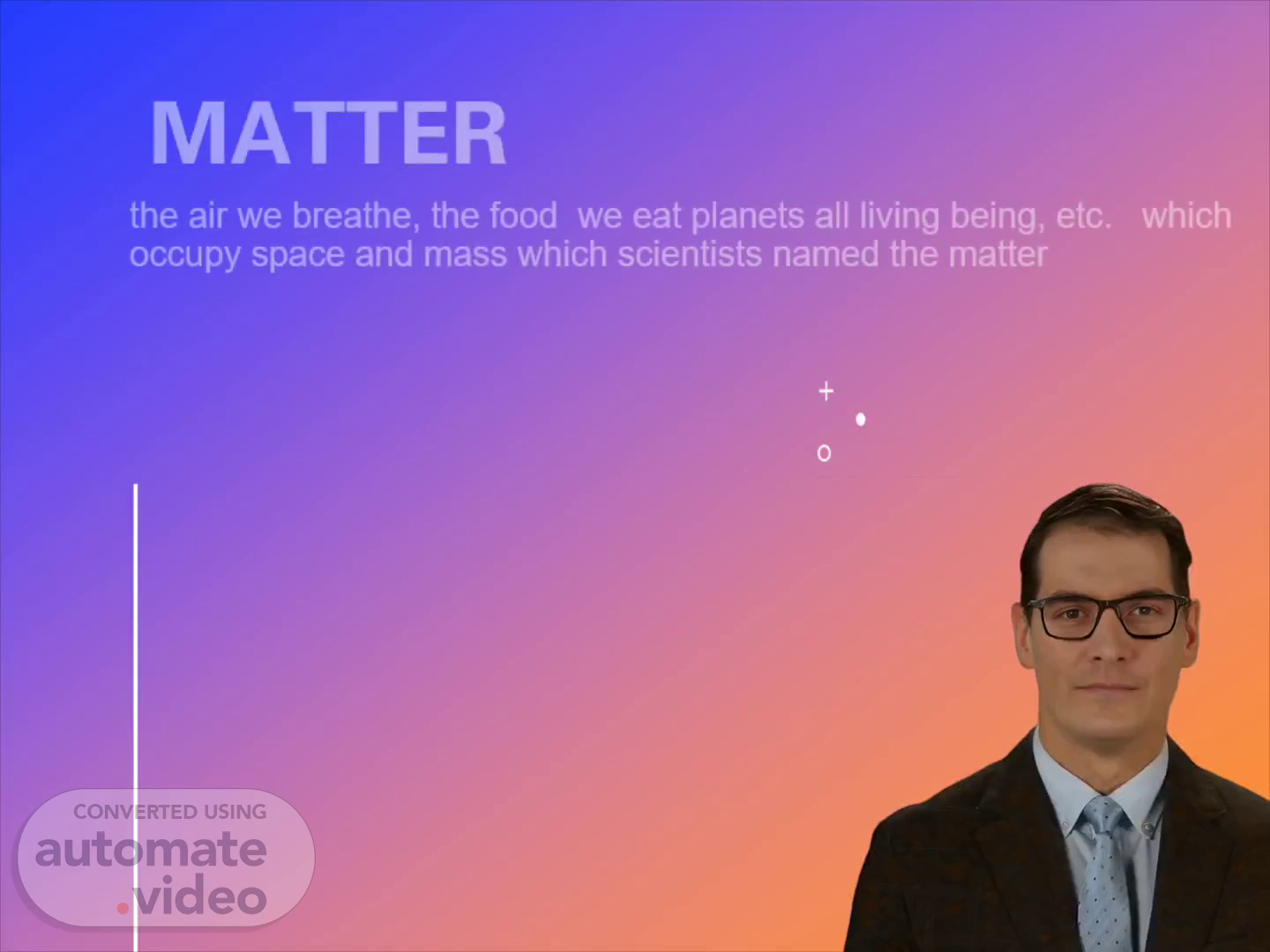Scene 1 (0s)
[Virtual Presenter] Welcome everyone. Today we will be discussing how electromagnetic forces interact with the four states of matter: solid, liquid, gas, and plasma. Let's get started..
Scene 2 (14s)
[Audio] The four fundamental states of matter are solid, liquid, gas, and plasma. Solids have a structural rigidity, meaning they resist change and keep their shape. Liquids are nearly incompressible and take the shape of their container. Gases are highly compressible and have greater intermolecular distances than solids and liquids. Plasmas consist of ions and free electrons, making them the most energetic of the four states. Any of these states can switch from one to another when energy is added or removed. Melting occurs when energy is added to a solid, turning it to a liquid, and vaporization is when energy is added to a liquid, turning it into a gas..
Scene 3 (1m 0s)
[Audio] Plasma is an unusual and intriguing form of matter found in nature. It consists of an equal number of positively and negatively charged particles such as electrons and atoms or molecules that have a missing electron. These particles are generally contained within a gas and become ionized, giving it unique characteristics. It differs from the solid, liquid, and gaseous states because its particles are affected by both electric and magnetic forces, which interact from a distance. This produces a collective behavior much like a fluid, even though particles rarely collide with each other. Moreover, plasma does not take on any definite shape or volume and has the weakest intermolecular forces of any of the states of matter. Researching and analyzing the properties of plasma and its correlation with electromagnetic forces is of great importance to our understanding of the physical universe..
Scene 4 (1m 57s)
[Audio] The composition of the Universe is a blend of ordinary matter, dark matter and dark energy. Ordinary matter is made up of atoms, molecules and other particles that make up what we can sense and physically touch. Dark matter and dark energy, on the other hand, are undetectable and intangible, accounting for roughly 25 and 70 percent of the universe respectively. Dark matter is thought to be composed of particles that have no interaction with light, while dark energy is believed to be an unknown power that influences the universe's expansion..
Scene 5 (2m 32s)
[Audio] Dark matter has fascinated physicists and astronomers for decades. It cannot be detected directly, but we are aware of its presence due to its gravitational effects on visible matter. This was first noticed by Fritz Zwicky of the California Institute of Technology, who used the Mount Wilson Observatory to measure the visible mass of a cluster of galaxies and found it to be inadequate to prevent the galaxies from escaping the gravitational pull of the cluster. This led to the conclusion that some form of unseen matter must exist. Currently, dark matter is estimated to make up about 30.1% of the universe, and it is believed to consist of particles that interact mainly through gravity. It is also possible that some of the dark matter could be made up of standard baryonic matter such as protons or neutrons. Dark matter plays an important role in our understanding of the universe and its effects are visible in the behavior of visible matter..
